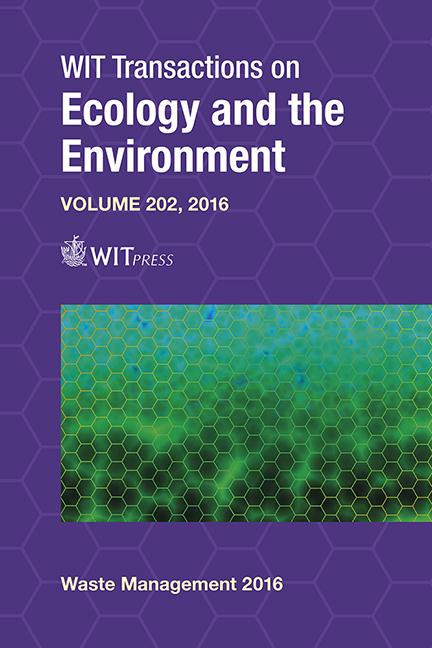The Characterization Of Brewing Waste And Feasibility Of Its Use For The Production Of Porous Ceramics
Price
Free (open access)
Transaction
Volume
202
Pages
12
Page Range
299 - 310
Published
2016
Size
1,173 kb
Paper DOI
10.2495/WM160271
Copyright
WIT Press
Author(s)
N. Quaranta, M. Caligaris, G. Pelozo, M. Unsen, A. Cristóbal
Abstract
During brewing large amounts of organic solid waste, including bagasse, yeast, malt and hops residues, among others are formed. The objective of this work is to study this waste and analyse the feasibility of its use as pore-forming material in the manufacture of porous ceramics. The residues from the production of craft beer consist of wet solid waste resulting from the separation by filtration after the mixtures maceration. This material was dried and then characterized using various techniques. Porous ceramic pieces were obtained from green bodies manufactured with mixtures of commercial clay with 10% in volume of residue, formed by uniaxial pressure of 25MPa, with the addition of 6% in weight of water. After a drying period, the samples were heat treated at 950°C following curves similar to those used in the ceramic industry. The compacts were characterized with different techniques. The obtained products have good physical and mechanical properties, with values of porosity, modulus of rupture, permanent volumetric variation and weight loss on ignition, within the range required in the market. The study of the feasibility of using this waste as a porosity former in ceramic tiles indicates that it is possible to use them without modifying the usual conditions of the industry, since the organic material incorporated combusted leaving a very low proportion of inorganic material that does not modify the diagrams with major oxides which remain being those of the clay used as main raw material, and these combustions are slow enough to allow sintering without deformation of the samples.
Keywords
waste, biomass, ceramics materials





